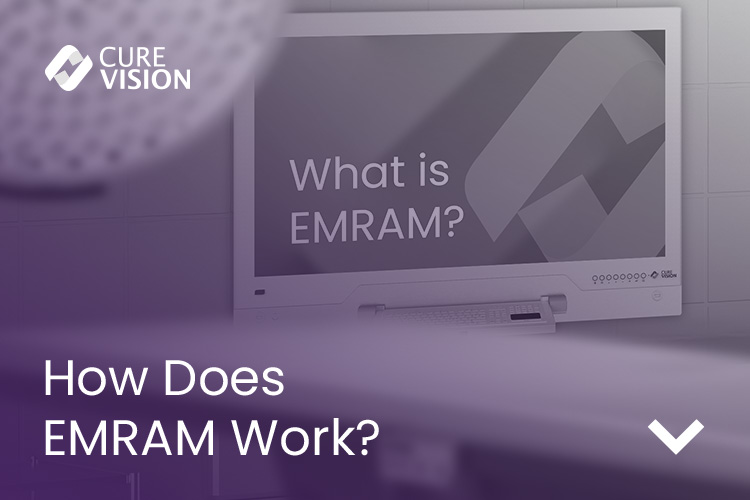How does EMRAM work?

The EMRAM (Electronic Medical Record Adoption Model) rates the digital level of hospitals on an international basis. The process involves auditing and accrediting health institutions' use of information technologies. EMRAM, the globally recognized accreditation and standard model, is used by HIMSS to evaluate the digital processes of applicant hospitals. According to this model, hospitals are ranked from 1 to 7. Hospitals have completed their digital process up to the sixth and seventh levels. Through HIMSS EMRAM levelling, hospitals can more easily adapt internationally to the ever-evolving health informatics technologies.
EMRAM uses the following criteria to evaluate hospitals.
Level 7 The hospital no longer uses paper to manage patient care, and all patient data, medical images, and other documents are stored in the electronic medical record (EMR). To improve healthcare quality, patient safety, and efficiency, the data warehouse analyzes patterns of clinical data. Using standardized electronic procedures (i.e. CCD) or a health information exchange, clinical information can easily be shared with all units authorized to treat patients. As a result, hospitals demonstrate summary data continuity across all services they provide (e.g., inpatient, outpatient, emergency medical services, and inpatient clinics under their ownership or management). For example, the rate of physician documentation and electronic orders is ninety percent (emergency services are excluded), and the rate of closed-loop processes is ninety-five percent (emergency departments are excluded).
Level 6 Closed-loop processes, medicines, blood products, and breast milk management are implemented using technology. Blood samples are collected and followed up on using technology. Closed-loop functions are fully implemented in fifty per cent of hospitals. The 50% rule does not apply to emergency services, which should also apply to this competence. Electronic drug management records (eMAR) and technology are integrated with electronic ordering systems (CPOE), pharmacy and laboratory systems to maximize secure point-of-care processes and outcomes. The "rule of five" and other "rules" for medication management, blood products, breast milk management, and blood sample handling are part of a different level of clinical decision support system. Physician documentation associated with the protocol and outcomes can be used to initiate advanced clinical decision support, for example, by providing variance and compliance alerts. The security policy and practices applied to user-owned mobile/portable devices have been revised. The hospital submits an annual report to the managing authority to address safety risks.
Level 5 In at least fifty percent of the hospital, all physician documentation (e.g. progress reports, opinion reports, discharge summaries, problem/diagnosis lists, etc.) uses structured templates and discrete data. Electronic data processing in emergency services is not subject to the fifty percent rule; however, physician documentation should follow the fifty percent rule. The nursing work plans can be edited, and the time and completion of tasks can be tracked and reported. An intrusion prevention system (IPS- Intrusion Prevention System) should be in place to detect and prevent attacks. Those devices authorized and defined as part of the hospital's network can be remotely wiped if lost or stolen.
Level 4 A clinician authorized to create an order creates 50% of all medical orders (orders) using the electronic order system (CPOE). CPOE makes use of a clinical decision support system (CDS) for primary conflict control and prompts added to the nursing and clinical repository. Within the scope of the digitalization process, CPOE was used in the emergency room but wasn't included in the percentage rule. Nurses and allied health personnel should use electronic clinical documents at least ninety percent of the time. All nursing documents in emergency services should be electronic, except for the 90% rule. It is permissible for physicians to access a national or regional patient database to support decision-making (e.g., medication, imaging, vaccination, laboratory results, etc.). Clinicians can access patient allergies, problem/diagnosis lists, drug therapy, and laboratory results through the electronic drug management record (eMAR). It is necessary to implement a potential attack detection system to detect network attacks. (IDS- Intrusion Detection System). Clinical decision support systems support nursing documents related to evidence-based medicine protocols at the second level (e.g., risk assessment scores that trigger recommended caregiver duties).
Level 3 About 50 percent of the nursing documents in the hospital (such as vital signs, flowcharts, caregiver notes, caregiver duties, and care schedules) have been created and integrated into the clinical data pool. Electronic data should be used to incorporate nursing documents with the data repository in 50 percent of cases. The clinical data repository should contain all electronic data within the hospital. The 50% rule does not apply to emergency services, but they should also use technology. The electronic drug management record (eMAR) application was implemented. The implementation of role-based access control (RBAC) has been completed.
Level 2 A hospital where all orders, results, radiology and cardiology images are integrated into a single clinical data repository (CDR). An interface that provides seamless access to this data for clinicians.
Level 1 Pharmacies, laboratories, and radiology information systems are in the same hospital. Through the intranet, PACS systems provide medical images to physicians along with radiology and cardiology. All film-based images have been replaced by images delivered via PACS systems. There is also a facility for storing non-DICOM images at the patient's request.
Level 0 The digital environment does not include even basic medical systems and processes (pharmacy, laboratory, radiology).


